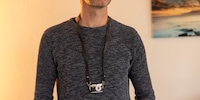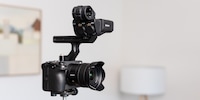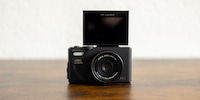
First impressions of the Sony A7S III
The new Sony A7S III will finally be released in September. Together with photographer Thomas Kunz, I was able to try out the only test sample for Austria and Switzerland for three days.
We are currently filming videos for Digitec and Galaxus with the Sony A7S II. I like this camera and am familiar with it. There have been rumours about an A7S III over the last few years. At some point I no longer believed in a successor. Now it's here after all. At last.

At first glance
At first glance, not much has changed externally compared to its predecessor. At second glance, there are some useful details. The biggest change is the fold-out and rotatable touchscreen. After just a short time, I was using the screen as if I had never been used to anything else. The screen is easy to read even from the most unusual angles. At the same time, the screen is protected when not in use. The surface of the predecessor's screen came off easily over the years.
The shutter button for video recording on the predecessor is located on a side edge, is slightly recessed in the housing and is too small. The new video recording button is located right next to the shutter release for photos. The only right place.
Sony has also equipped the camera with a full-size HDMI output, a high-resolution electronic viewfinder and two card slots for SD or the new CFexpress A cards. Sony has also completely revised the settings menu. Many people will be pleased that everything is a little clearer and more logically organised. I will have to get used to it first. The old menu is already internalised and familiar.
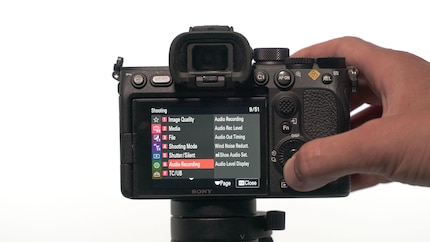
4k slow motion and heaps of data
The predecessor was capable of recording full HD videos at up to 100 frames per second. Together with a crop factor of 2.2 at 100fps, however, the images were not really usable. A lot has happened in the 5 years in between. With the third generation, 4K videos can be recorded at up to 100 fps (120 in NTSC mode). The crop factor is very low at 1.1 and the images are still sharp.
The camera is able to record in any shooting mode with a colour depth of 10 bit (luminance levels per colour channel) and a colour subsampling of 4:2:2 (Sony A7S II: 8 bit 4:2:0). On the one hand, the higher colour depth offers more leeway in post-production, but also a much higher data volume. The 64 GB SD cards or the 1 terabyte hard disc used up to now will be full more quickly than usual. Anyone who wants to buy an A7S III will sooner or later have to think about a sensible storage solution. If you haven't already done so anyway.
The sensor of the Sony A7S III is stabilised on five axes and guarantees shake-free videos to a certain extent, even without a tripod. The predecessor already had a stabilised sensor. I did not notice any significant improvement over its predecessor. However, an "active mode" can now be selected in the camera menu. This means that the image is again cropped by a factor of 1.1 and also digitally stabilised.
It can also take photos - Tom's impression
Although the camera is optimised for video, the 12 megapixels are sufficient for taking photos for most applications such as social media or medium-sized prints. For product photography in an advertising campaign, however, Tom needs a camera with significantly more megapixels.
Tom: "The camera is comfortable to hold and impressed me with its fast autofocus and ISO performance. I took photos at ISO 104 600 and the pictures look a little grainy but still okay. What do you think? Another highlight for me is the menu. This is the first Sony camera I've held in my hand without getting upset about the menu."

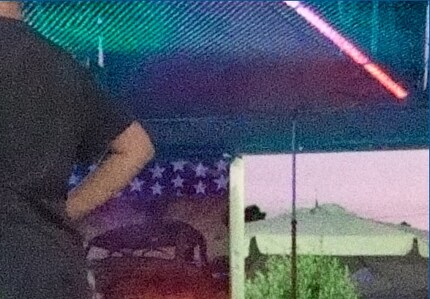
The first impression is right
The camera makes a great first impression. Impressive low-light performance, 4k videos in 10 bit and 4:2:2 colour subsampling, the 120 fps in NTSC mode and many other details make the camera fit for the future. The fact that the camera doesn't offer 8K doesn't bother me. An option for internal RAW videos would have been nice. However, up to 16-bit RAW recordings are possible via HDMI and an external screen.
As a Multimedia Producer, preparing multimedia content and knowing about cutting-edge technology is my business. My main focus at digitec is producing videos. I can’t wait to try out new products such as cameras, drones or smartphones as soon as they’re launched. This is where being at the source comes in rather handy. When I’m not working, I’m probably skiing, biking or hiking – the mountains are my place to be.
